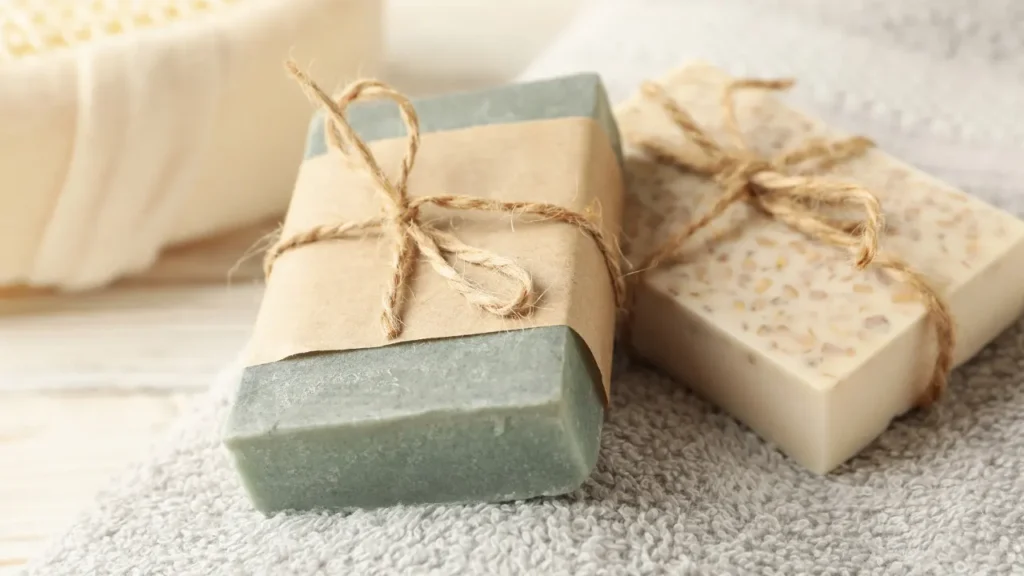Description
A common dermatological disorder known as keratosis pilaris (KP) causes tiny, rough lumps on the skin that resemble acne. Usually, a bright pink or reddish tint surrounds these lumps. Although some people may notice slight itching or irritation, KP is typically asymptomatic. The illness is typically chronic and can last for years, with occasional flare-ups and remissions.
You May Also Like:
TOP 3 MUSHROOMS FOR MEMORY– YOU WILL NEVER FORGET NUMBER ONE
FINDING THE BEST TURKEY TAIL MUSHROOM POWDER: 5 TOP BRANDS REVIEWED
Keratosis Pilaris: Description, Causes, And Treatment Protocol is an original (HealthXWire) article.
Possible Causes
There are several potential causes of keratosis pilaris (KP). Given that the illness frequently runs in families, genetic factors are a factor. Rough bumps develop as a result of hyper-keratinization, which is an abnormal buildup of keratin surrounding hair follicles. Keratin plugs are more likely to form if you have dry skin. KP and eczema (atopic dermatitis) frequently coexist, which suggests a genetic and immune system malfunction. Additional factors include anomalies of the hair follicles and hormonal changes brought on by puberty or pregnancy. Dryness might get worse and KP symptoms can get worse due to environmental factors including inadequate moisture and harsh weather.
Exacerbating and Mitigating Factors
There are many factors that can make KP symptoms worse or better. Cold or dry weather tends to make the disease worse, whereas humid settings may help with symptoms. KP can get worsened by excessive friction, like that caused by tight garments or rough fabrics. In contrast, using mild soaps, moisturizing the skin, and exfoliating gently can help lessen the look and roughness of those pimples.

Standard Treatment Protocol
The goal of the typical keratosis pilaris treatment is to lessen itching and irritation while also reducing the visibility of the bumps alongside their roughness. It is frequently advised to use the following therapies:
Topical Therapies:
- Moisturizers
By moisturizing regularly, this can improve the texture of the keratosis pilaris bumps by hydrating the skin and reducing dryness. Alpha-hydroxy acids (AHAs), urea, salicylic acid, lactic acid, and other substances must be foundin moisturizers.
- Keratolytic Agents
The keratin plugs inside the hair follicles are partially removed by these chemicals. Items containing salicylic acid, urea, or lactic acid are some examples. They function by scrubbing away dead skin cells and encouraging cell shedding.
- Retinoids
To encourage skin cell turnover, lower inflammation, and enhance the texture of your skin, doctors may prescribe topical retinoids like adapalene, tretinoin, or tazarotene. For obstinate keratosis pilaris instances, they are especially helpful.
Gentle Exfoliation: Dead skin cells can be removed and the skin surface can be improved with regular and moderate exfoliation. To prevent aggravating the skin further, you must avoid vigorous rubbing. Instead, you must lightly massage the areas affected using a gentle washcloth or a cleaner that gently exfoliates your skin.
Lifestyle Modifications:
- Moisturizing regularly
To seal in moisture, moisturizer must be used as soon as possible after a shower or bath.
- Avoiding harsh soaps
To avoid further drying out or irritating the skin, you need to use gentle, fragrance-free cleansers or soaps.
- Avoiding high temperatures and humidity:
Keratosis pilaris symptoms might worsen in high temperatures. You should avoid taking really hot baths or showers while protecting your skin from overexposure to sunlight.
Wearing loose-fitting garments:
Tight clothing may increase friction and exacerbate the problem. Selecting breathable materials and loose-fitting clothes is essential.

Treatment Options
Additional treatment alternatives could be taken into account if the problem is more serious or if traditional treatments are ineffective. Among these choices are:
Prescription Medications:
- Topical Corticosteroids
Topical corticosteroids can be prescribed for a brief period of time to lessen the itching and irritation brought on by keratosis pilaris. Due to probable negative effects, prolonged usage of corticosteroids is typically not recommended.
- Oral Isotretinoin
In critical instances, oral isotretinoin may be an option. This medication is only suitable in specific situations and should only be used under the supervision of a dermatologist due to possible side effects.
Over-the-Counter (OTC) Formulations: OTC remedies can be helpful for treating keratosis pilaris symptoms that are mild to moderate. Products with active chemicals like lactic acid, salicylic acid, urea, or AHAs should be sought out. These can lessen keratin buildup, exfoliate the skin, and enhance the appearance of the affected regions.
Nutritional Supplements: Despite the paucity of scientific proof, several people claim that using natural treatments and nutritional supplements has helped their keratosis pilaris indications. These dietary supplements are said to have potential benefits for keratosis pilaris:
- Vitamin A
Since it controls how skin cells grow and differentiate, vitamin A is crucial for maintaining healthy skin. Consuming foods like spinach, sweet potatoes, carrots, liver, and other dark-colored leafy greens will help you get enough of it. However, consuming too much vitamin A can have negative effects, so it is important to limit supplementation and seek advice from a doctor on the right dosage.
- Vitamin D
When exposed to direct sunlight, the skin produces vitamin D, which plays a role in many skin-related processes. According to several studies, some skin disorders along with vitamin D deficiency may be related. While additional research is required, it may be advantageous to maintain optimal vitamin D levels from supplementation or solar exposure.
- Antioxidants
Together with other antioxidants, vitamins C and E help shield cells from oxidative stress along with free radical damage. They can be found in a wide variety of fruits, vegetables, and nuts. Antioxidants may improve the appearance of keratosis pilaris and assist in maintaining the general health of your skin.
- Omega-3 Fatty Acids
Important lipids known as docosahexaenoic acid (DHA) and eicosapentaenoic acid (EPA) are present in fatty fish, fish oil supplements, and some plant sources, such as chia seeds and flaxseeds. Since omega-3 fatty acids have anti-inflammatory properties, they can reduce the discomfort associated with keratosis pilaris.
- Zinc
Zinc has been a crucial mineral involved in many biological functions, including the health of the skin. It promotes skin regeneration, immunological function, and wound healing. Seafood, nuts, seeds, legumes, and lean meats are excellent sources of zinc for the diet.

Natural and herbal remedies: As supplemental therapies for treating the signs of keratosis pilaris, herbal and natural remedies are frequently used. Some people have experienced beneficial outcomes, despite the paucity of empirical proof for their usefulness. Before using any novel natural or herbal therapies, it is always recommended to get medical advice. The following are several natural and herbal treatments for keratosis pilaris that are recommended:
- Aloe Vera
The calming and moisturizing properties of aloe vera gel, which is made from the plant’s leaves, are well-known. It can lessen the dryness and irritability brought on by keratosis pilaris. Unadulterated aloe vera gel must be directly applied to the troublesome areas, left on for some minutes, and then washed off.
- Coconut Oil
Natural moisturizers like coconut oil can soften one’s skin and lessen dryness. Lauric acid, which possesses antibacterial effects, is present in the moisturizors. In order to hydrate the skin, the afflicted regions must be carefully massaged with natural, unrefined coconut oil.
- Witch Hazel
Witch hazel represents a natural astringent made from the bark and leaves belonging to the witch hazel shrub. Its calming and anti-inflammatory properties can help lessen inflammation and redness. Using a cotton ball, you need to rub witch hazel topically on the afflicted regions.
- Apple Cider Vinegar
Owing to its acidic qualities, apple cider vinegar has been suggested to help in skin exfoliation. You must dilute the apple cider vinegar with water with a cotton ball to the affected regions. Before rinsing it off, it needs to be left on for a short while. It is crucial to remember to dilute apple cider vinegar before using it because it may irritate the skin if used undiluted.
- Oatmeal Baths
Due to its calming properties, oatmeal can help with dryness and itch relief. One needs to fill a warm bath with colloid oatmeal or finely crushed oats and soak for 15 to 20 minutes. The skin must then be gently patted dry.
- Tea Tree Oil
Anti-inflammatory and anti-microbial effects are present in tea tree oil. Tea tree oil needs to be applied topically after being diluted using carrier oils like olive oil or coconut oil. Before applying tea tree oil, it is essential to conduct a patch test because some people can have skin irritability.
- Calendula
Known for its calming and anti-inflammatory effects, calendula is an herbal medicine. To lessen swelling and encourage skin healing, it may be topically used as creams or ointments.
- Turmeric
Curcumin, a component of turmeric, is an anti-inflammatory and an antioxidant. The keratosis pilaris-related irritation can be lessened, as a result. To treat the afflicted areas, you must create a paste by combining turmeric powder with some water or carrier oils. After a few minutes, you must wait before rinsing it off.

Conclusion
Before beginning any new therapy or supplement program for keratosis pilaris, it is crucial to speak with a healthcare provider, ideally a dermatologist. Depending on the seriousness of the ailment, they might offer an individualized treatment strategy and assist with progress monitoring.
Additional resources for further reference
https://my.clevelandclinic.org/health/diseases/17758-keratosis-pilaris
https://www.aad.org/public/diseases/a-z/keratosis-pilaris-treatment
https://www.ncbi.nlm.nih.gov/books/NBK546708/
https://dermnetnz.org/topics/keratosis-pilaris
Important Note: The information contained in this article is for general informational purposes only, and should not be construed as health or medical advice, nor is it intended to diagnose, prevent, treat, or cure any disease or health condition. Before embarking on any diet, fitness regimen, or program of nutritional supplementation, it is advisable to consult your healthcare professional in order to determine its safety and probable efficacy in terms of your individual state of health.
Regarding Nutritional Supplements Or Other Non-Prescription Health Products: If any nutritional supplements or other non-prescription health products are mentioned in the foregoing article, any claims or statements made about them have not been evaluated by the U.S. Food and Drug Administration, and such nutritional supplements or other health products are not intended to diagnose, treat, cure, or prevent any disease.
Table of Contents


